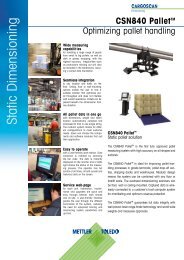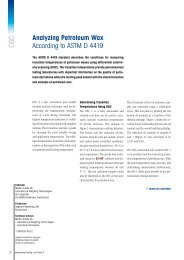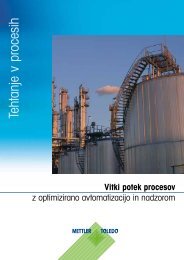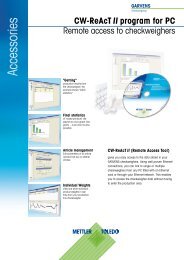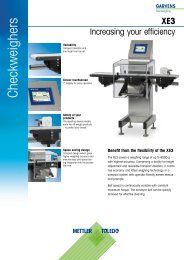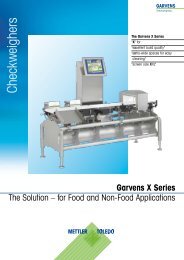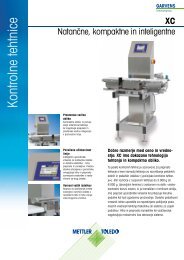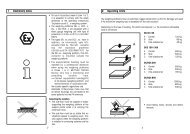Polymorphism, Sulfapyridine - METTLER TOLEDO
Polymorphism, Sulfapyridine - METTLER TOLEDO
Polymorphism, Sulfapyridine - METTLER TOLEDO
- No tags were found...
Create successful ePaper yourself
Turn your PDF publications into a flip-book with our unique Google optimized e-Paper software.
<strong>Polymorphism</strong>, <strong>Sulfapyridine</strong>NSample<strong>Sulfapyridine</strong>H 2 NSO 2 NHApplicationActive ingredientConditions Measuring cells: DSC820, FP82 microscope hot stagePan:DSC: Aluminum 40 µl, hermetically sealedFP82: Sample holder with cover glassSample preparation: As received, no preparationDSC measurement: Shock-cooled from the melt. Then heating from 40 °C to 200 °Cat 5 K/minAtmosphere:Nitrogen, 50 cm 3 /minInterpretationShock-cooling (rapidly cooling) the sample to a temperature below the glass transitiontemperature T gbefore performing a heating run is often the best method of detectingpolymorphism. According to Oswald, the metastable phase (B, if one exists at all) crystallizesabove the glass transition T g(A). This is transformed on further heating first monotropically(C, solid-solid transition) and then, after the melting of the metastable phase (D), bycrystallization from the liquid phase (E) to the stable modification. This then finally melts(F).It is known from other DSC measurements, that sulfapyridine exhibits further modifications.<strong>METTLER</strong> <strong>TOLEDO</strong> Collected Applications TA PHARMACEUTICALS
EvaluationEffectOnset, Peak, °C ∆H, J/gA 54.8 — glass transitionB 99.9 64.9 cold crystallizationC 150.1 (2.4) monotropic transitionD 175.3 (24.4) melting of the metastable phase still presentE 177.3 (2.4) crystallization of the stable phase from the meltF 190.3 (109.1) melting of the stable phasePhotographs were taken of the crystal modifications at different temperatures using theFP82 hot stage microscope in order to gain additional information about the polymorphicbehavior of the substance. The following photographs correspond to the crystal modificationsat about 110 °C and 180 °C.Crystal modification at about 110 °CCrystal modification at about 180 °CConclusionThe possibility of a substance exhibiting polymorphism is best investigated by first of allmelting it most carefully (rapidly, under nitrogen) and then immediately shock-cooling itunder its glass transition temperature (rule of thumb: T gis roughly 3 /4 T f, both temperaturesare in Kelvin). Afterwards, the different modifications can be observed by slowly heatingthe sample in the DSC cell.PHARMACEUTICALS <strong>METTLER</strong> <strong>TOLEDO</strong> Collected Applications TA



